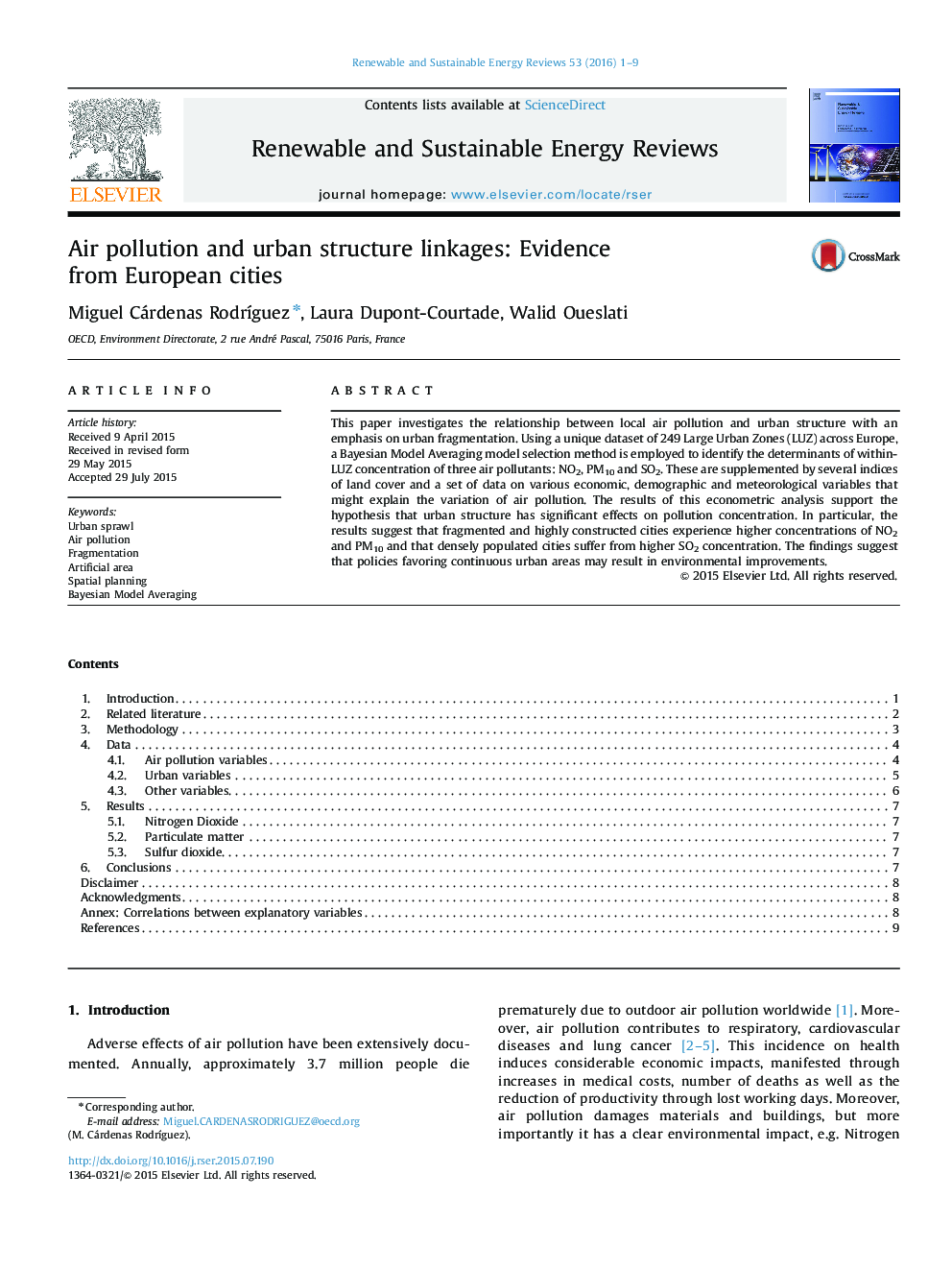| Article ID | Journal | Published Year | Pages | File Type |
|---|---|---|---|---|
| 8115554 | Renewable and Sustainable Energy Reviews | 2016 | 9 Pages |
Abstract
This paper investigates the relationship between local air pollution and urban structure with an emphasis on urban fragmentation. Using a unique dataset of 249 Large Urban Zones (LUZ) across Europe, a Bayesian Model Averaging model selection method is employed to identify the determinants of within-LUZ concentration of three air pollutants: NO2, PM10 and SO2. These are supplemented by several indices of land cover and a set of data on various economic, demographic and meteorological variables that might explain the variation of air pollution. The results of this econometric analysis support the hypothesis that urban structure has significant effects on pollution concentration. In particular, the results suggest that fragmented and highly constructed cities experience higher concentrations of NO2 and PM10 and that densely populated cities suffer from higher SO2 concentration. The findings suggest that policies favoring continuous urban areas may result in environmental improvements.
Related Topics
Physical Sciences and Engineering
Energy
Renewable Energy, Sustainability and the Environment
Authors
Miguel Cárdenas RodrÃguez, Laura Dupont-Courtade, Walid Oueslati,
